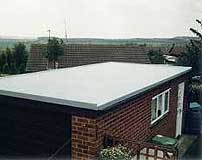Do It Yourself: Basics of Flat Roof Maintenance
This entry was posted on Sep 4, 2014 by speedy-bedDo you hate paying people for jobs you could do yourself? When it comes to flat roof maintenance, it can be a very easy job to do yourself with a few basic tools and a little bit of know how. Flat roofs are one of those features on your home that tends to require a little bit more work than the rest of the house. Here are a few tips to help you out:
Carry Out Inspections
Flat roofs are prone to damage, so it is vital that you carry out routine checks to make sure that you catch any problems early on before they turn into huge problems. Some of the tell-tale signs of damage include ruptures, puddles, blisters or bubbles in the roofing which can indicate that something is not quite right with the roof.
Keep it Clean
One of the biggest problems with flat roofs is that they tend to collect a lot of debris, which can build up to create problems. Make sure that you regularly remove dirt, leaves and other items that accumulate on the roof – the more frequently you clean, the less chance there is that there will be any long term damage.
Making Repairs
If you do notice that the roof is damaged then you will need to measure the area that is damaged so that you can determine which tools and materials are necessary. Depending on what the damage is, different methods will have to be employed to fix the problem. Here is a brief breakdown of the most common issues:
Puddles – this is often caused by dips in the flat roof or by not having enough of a slant to properly drain. The best way to fix this is to fit roof drains or built up the roof so that there is a greater slant to provide the best drainage.
Blisters – not always a bad thing, in some roofs with a vapour permeable EDPM membrane this will happen after installation but they will dissipate in time. Large blisters need to be looked at immediately and repaired by cleaning and preparing the area before cutting open the blister and allowing it to fully dry. Once dry, the blister will need to be resealed with a suitable glue or solvent.
Punctures – these can cause some serious damage, so it is best to fix these as soon as possible. Depending on the severity of the puncture, you may need to get a professional in, although re-patching the roof or laying resin can also be a good solution.
Working on Flat Roofs
When carrying out repair and maintenance work on a flat roof you need to make sure that you take the utmost care to prevent causing additional damage. Always try to do any maintenance during dry and sunny periods so that water doesn’t find its way under the layers. Try to carry out all the repairs at one time to avoid the repeated pressure on the surface of the roof – wherever possible try to walk along the areas of the support beams.
Sometimes there are jobs that you will not be able to do yourself, in these situations it is best to hire a professional to ensure that the repairs are made and the roof remains watertight. Having the right materials is also essential, so before you start doing any repairs make sure the roofing resin and top coat you have are fit for the purpose.

